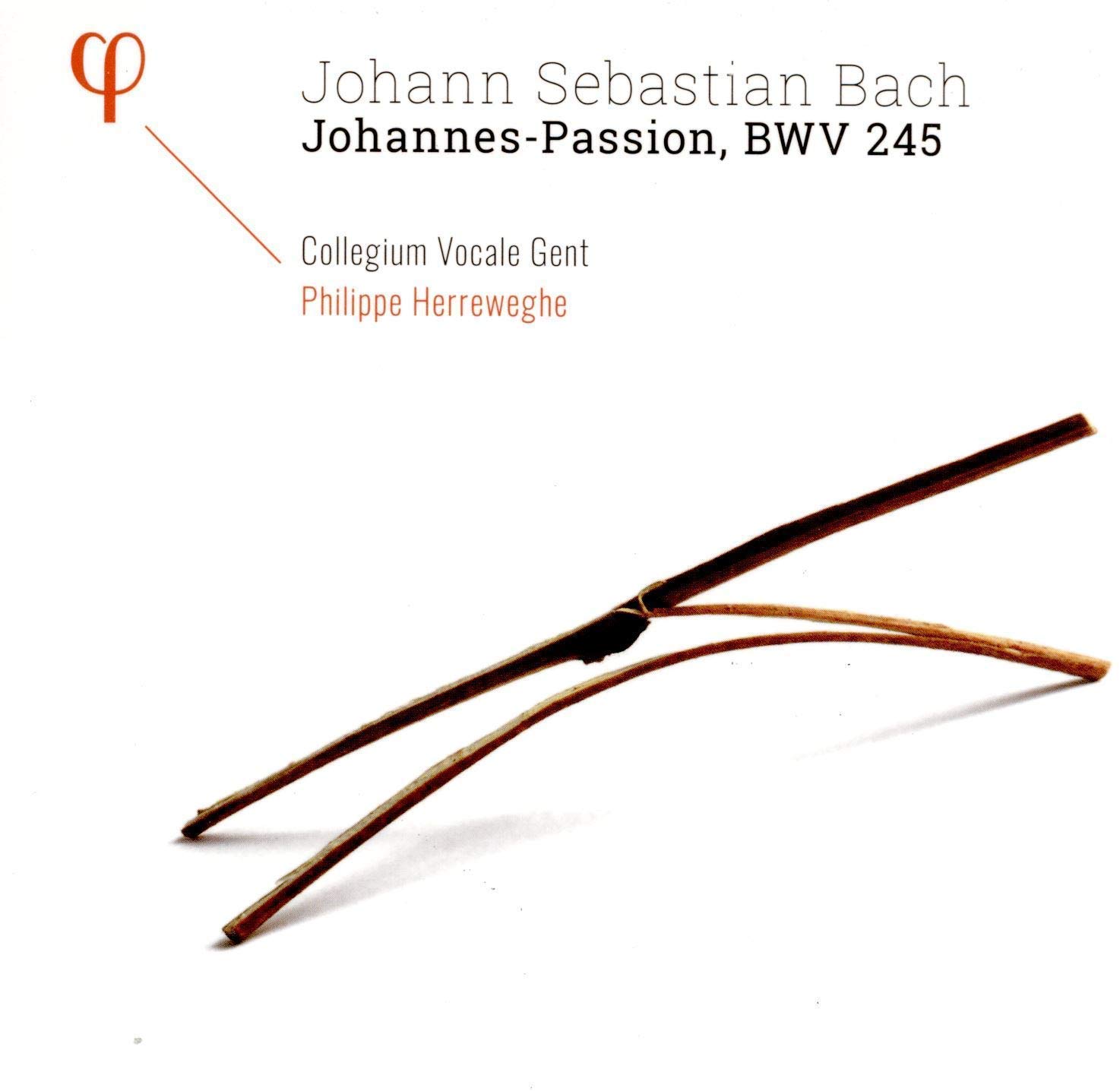Collegium Vocale Gent, Philippe Herreweghe
107:08 (2 CDs in a card tryptych)
PHI LPH031
Click HERE to buy this on amazon.co.uk
From the opening bars, this performance has life, drive and commitment. The first thing you notice is the immediacy of the choral sound: the 16 singers, who properly include the four singers of the arias – such luminaries as Dorothea Mields, Damian Guillon, Robin Tritschler and Peter Kooij – but not the Evangelist and Jesus, are clear and powerful – they sound very close and engaged as the turba.
This performance gives us the habitual mix of versions, and is a real contrast to Rademann’s 1749 version, that anticipates the classically inspired performance tradition. Herreweghe has violas d’amore and a lute, but no harpsichord or bassono grosso, mandated in the 1749 version. Much of the booklet’s essay is devoted to justifying this mixed bag approach on the grounds that Bach never produced a ‘final version’. By the time we have read this essay in English, French, German and Dutch, there is room only for a list of players and singers and the text in four parallel columns. So there are no bios, and no information on the organ or any other instruments, and not even a link to a website for further information.
The continuo with the Evangelista and others is simple: a small organ with a principal tone and the string bass – often including 16’ – and they provide much of the dramatic impetus. While other singers are absolutely splendid, I am slightly less convinced by Maximillian Schmitt, the evangelist: I prefer my narrators a bit less singerly – more sprechgesang than operatic declamation, and he seems to have only one style. But the entire singing team properly takes centre-stage and the turba exchanges are crisp and well integrated in a way that can scarcely be achieved by a separate and distant ‘choir’.
The arias are well-paced – the lute is used in Ich folge and in Erwege, giving a degree of transparency to the texture there which allows Patrick Tritschler’s voice space to bloom. Putting all of part II onto the second CD allows the chiastic structure formed around Durch dein Gefängnis to be appreciated, and the dramatic intensity of the turba’s interchanges to mount. In Eilt, the overlapping but rhythmically independent lines of the upper strings, the basso continuo – helped by the bassoon and by wonderful violone playing – and the bass singer are each given their freedom, and the result is an urgent hastening of individual voices, but with no sense of rush. The rhythmic punch here is continued into Lasset uns den nicht zerteilen, which I have rarely heard so well done: everything neat and balanced but at a cracking pace.
Damian Guillon has exactly the right voice for Es ist vollbracht, where the central section trembles with suppressed excitement, and Peter Kooij could not be bettered in Mein teurer Heiland, where it was welcome to have no doubling 16’ tone on the spiccato violoncello line that introduces the D major foreshadowing of the resurrection, a theological insight which Bach the Lutheran theologian has grasped in the Johannine theology of the Passion – the gospel narrative that the church has always read on Good Fridays. The seemingly effortlessly soaring voice of Dorothea Mields in Zerfließe gives way to repeated sobs on ‘Tod’, which I have come to think is the right way to interpret the trill written there, and the lute is a telling addition to the traverso and oboe da caccia.
All in all this is an outstanding version, coherent and well thought out, with the dynamics and style of the chorales integrated into the overall scheme, and directed and performed by musicians who understand what they are doing and how Bach’s Lutheran formation has given us the ever-changing, ever vital John Passion with no one ‘right way’ of performing it.
David Stancliffe
